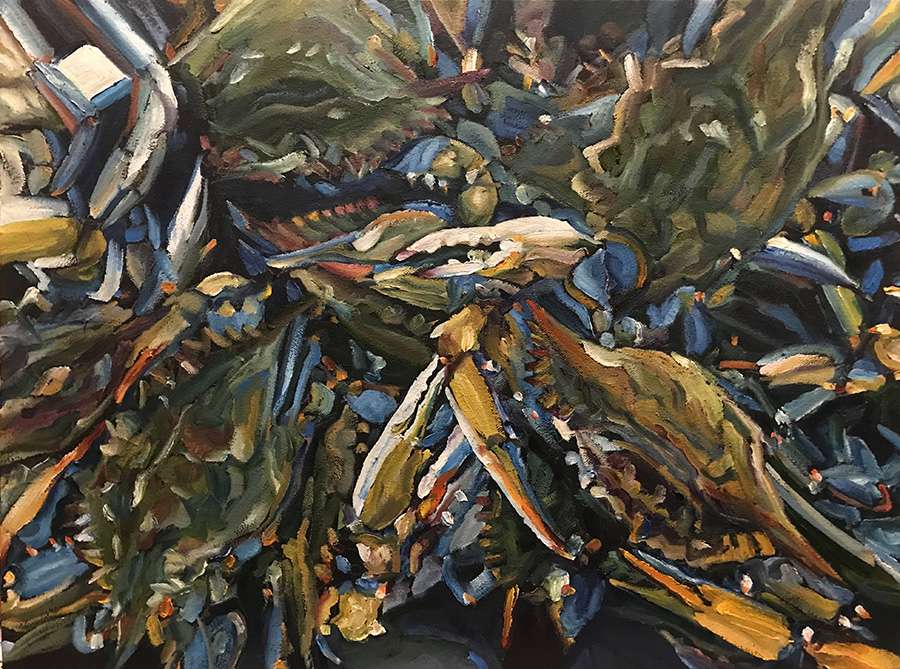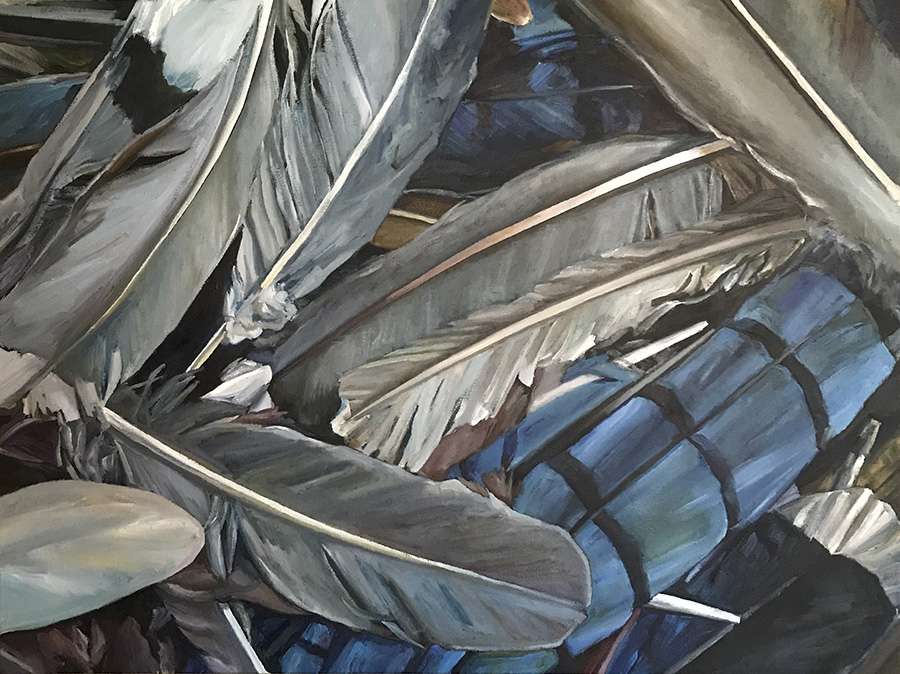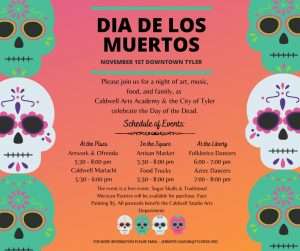



Inside the Artist’s Studio
Feed Them on Your Dreams: Frank Herbert
Derrick White
Teachers and mentors are important. Think back to the ones who have made a positive impact on your life and, if possible, thank them. It means a lot. I am reflecting on this truth after a dinner and conversation with East Texas artist, Frank Herbert. He states, “When I was in first grade, my teacher chose a drawing I scribbled out with crayons of our family dog and hung it up for the class to see. This took me by surprise at the time, but it was positive feedback telling me my drawings were special. My fifth-grade teacher, Kathleen Ward, took our class to the New Orleans Delgado Museum of Art which gave us not only an opportunity to see the collections on exhibit but the more subtle message that art is important. This museum was not far from the high school I would attend years later and after school (or on the rare occasion when I might skip my afternoon classes) I often stopped in to see the art and hang out in the quiet gallery rooms. My high school offered lots of classes with options for creative expression. I was able to take filmmaking, creative writing, and visual art. After graduation, I decided to study art at Louisiana Tech University, a suggestion from my high school art teacher, Barbara Follett.” Great and engaging teachers create great and engaging future teachers. Teachers and mentors are important and access to great teachers and mentors is essential.
Frank Herbert is not only an outstanding and prolific artist, but he is also an art teacher shaping the future of the art of East Texas and beyond. Frank earned his Bachelor of Fine Arts from Louisiana Tech University in Ruston, Louisiana. Afterward, wanting to continue working in a university environment, he enrolled in the Art and Art History program at Colorado State University in Fort Collins, Colorado. He graduated with a Master of Fine Arts degree, a terminal degree, meaning it is the highest academic degree available in the Fine Arts. Herbert was hired by Kilgore College in the Fall of 1984 where he has been teaching ever since, sixteen years as a full-time art instructor and twenty-four years as an adjunct instructor. Frank has also taught for Panola College, Northeast Texas Community College, and Stephen F. Austin State University. In the Fall of 2000, Frank accepted a full-time position as a teacher of American Sign Language at Longview High School where he taught for 19 years before retiring from full-time teaching. He recalls, “At Louisiana Tech I met my wife, Ellen. She was a graduate student pursuing an MFA degree but, even though I was an undergraduate, we were in a few classes together and she lived near the house my roommate and I were renting. Early in the first semester I saw her coming out of the library of the Wylie Tower of Learning and introduced myself. Our friendship became a romance, and we are still together nearly fifty years later. At Tech, most art majors were afforded a studio on campus, rooms in two abandoned dormitory buildings, and most any time of the day or night I could find art student friends working there. Not only did I launch my career in college, but I formed lifelong friendships with faculty and fellow students in my art school years.” He adds, “During a casual hallway conversation in the art building, one of my college professors told my roommate and me that we would probably not get much attention for our art at first but to just keep working. He was right. My biggest breaks have often come when I least expected them but were given to me because I had just kept working.”
Frank fills the picture plane fully with his compositions of flowers, feathers, leaves, and all manner of seafood from his Gulf Coast series. His paintings have a keen sense of light and color and are quite expressive up close on the surface and utterly realistic from a discernable distance where the subject matter magically appears. He explains, “I work in rather traditional media, oil paint, brushes, and canvas to record patterns of color, light, and shadows. Somewhat like in 19th century Impressionism and Post-Impressionism (Herbert credits artist, Paul Gauguin, as an inspiration for his Post-Impressionist use of color and brushstrokes) the painting media is obvious on the canvas surface as I try to paint efficiently with each stroke seen individually but adding to the overall effect of natural light. I choose subjects based on sights catching my attention as I go about my everyday activities here in East Texas or on return trips to the Gulf Coast. After years of moving from one painting to the next, I noticed a trend in these preferred images. I am drawn to scenes of flat organic forms layered on a surface and seen from above, feathers, colorful autumn leaves, seafood of fish, crabs, or shrimp. I hope the drama of color, light, and spatial illusion draws people to look closer and notice the structure and process I have used in building the picture, cool colors next to warm colors, light values next to dark values, painting both sides of every edge. I work in series because I learn from every painting and move to the next with ideas from the last. Frank concludes, “Through the years of working as an artist I have experimented with various materials and processes based on what media best suited my ideas of the moment, painting on wood, paper, plastic resins with watercolor, oil, acrylic, spray paints, sumi ink sticks, or gouache. But for the last ten years or so, I have decided to stay focused on one main media, oil paint, brushes, and gallery-wrapped canvas.
To learn more about the art of Frank Herbert check out his website here: franklherbertartist.carbonmade.com


















